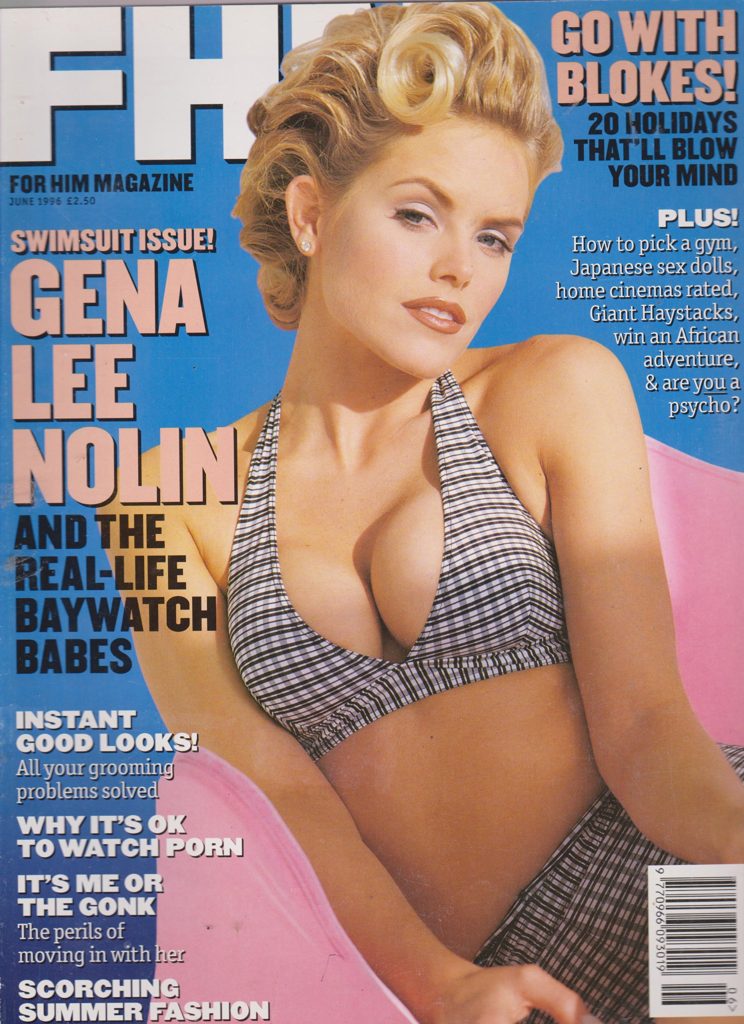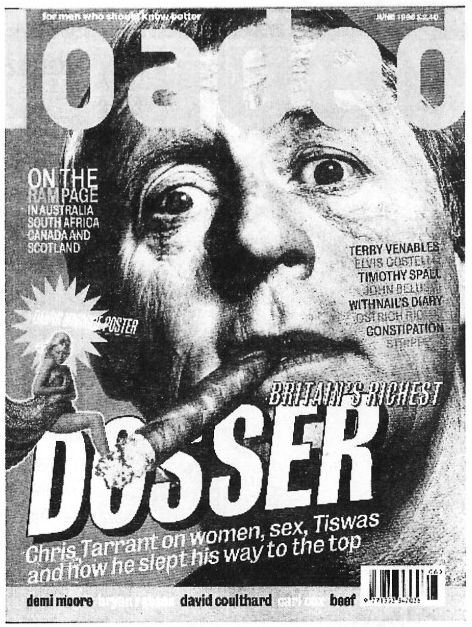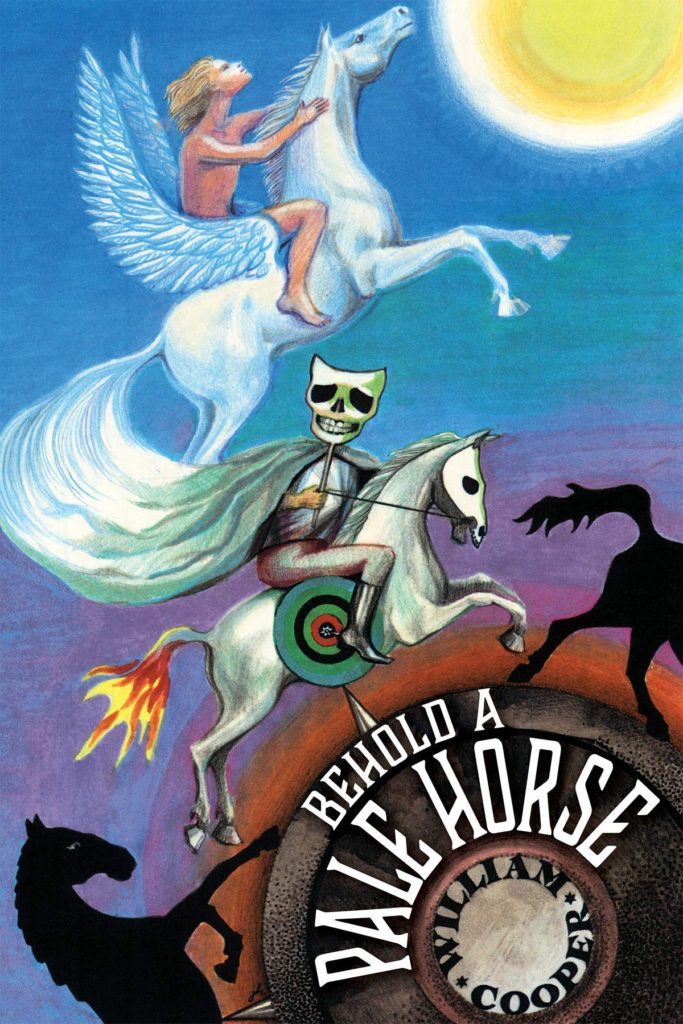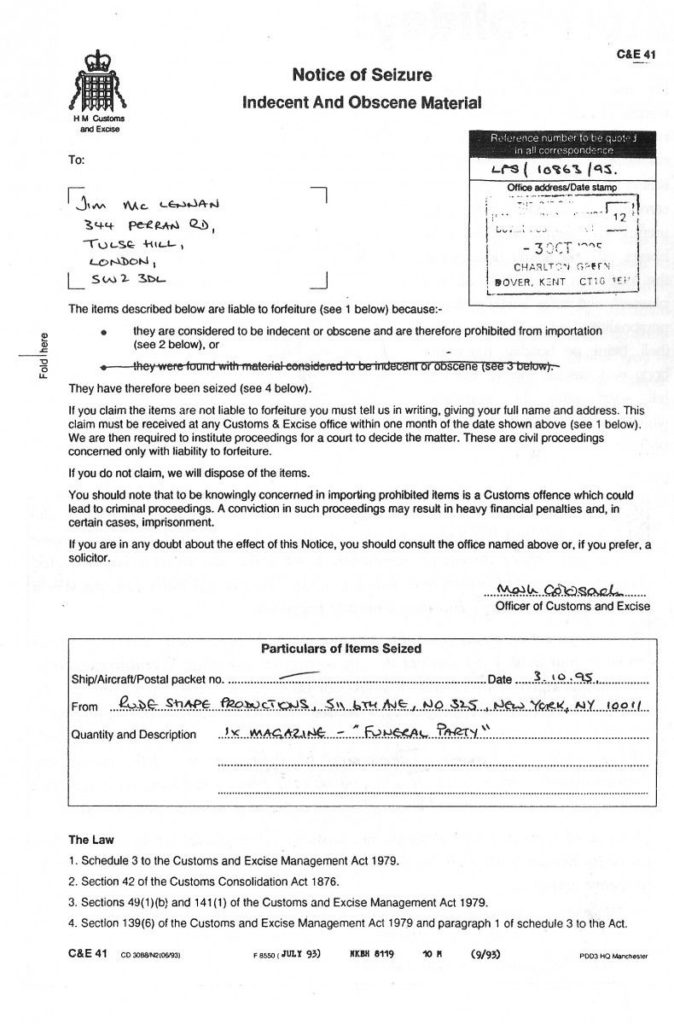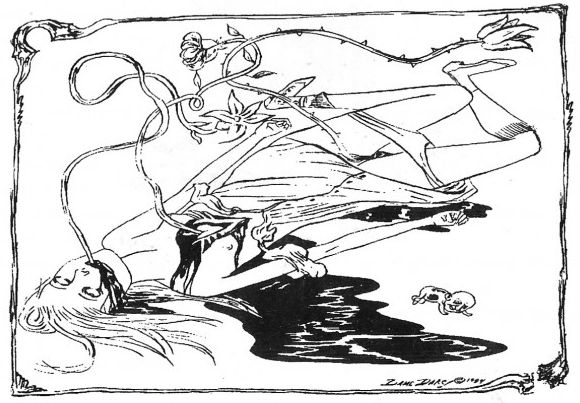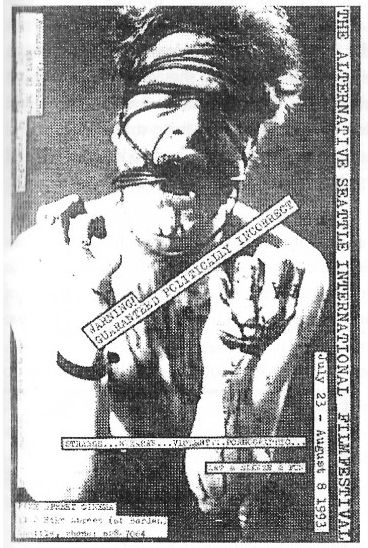The Good, The Bad, and the Printed

Steve Aylett – Bigot Hall, Serif, £8.99, pp153. Aylett’s first book, ‘The Crime Studio’ was reviewed last TC, and was a highly enjoyable selection of hyperviolent splinters in a fast, loose style. “Bigot Hall” replicates the short vignette approach, but is notably less successful. The hero remains nameless, a child advanced for his years, trapped in a family of misfits and weirdoes. That’s it, which is the main problem. While “The Crime Studio” had enough characters to mean the interplay between them offered sufficient variation for latitude, here the restrictions prove too much. There is no detectable character development; at the end, something happens; precisely what is impossible to say.
On the bright side, Aylett’s technique remains as sharply infectious as ever, his ear for the English language is great. Someone should hire the man to beef up movie scripts; if it’s sharp word-play that you want, he can out-Tarantino Quentin, with one frontal lobe tied behind his back. I mean, “the lake was infested with boss-eyed cartoon characters which ghosted up, stared like lost souls and dipped away again. Inbetween were swirling volume levels and swarms of seahorses with tiny training wheels“. So what you have here is a book where the sentences are pretty good, and anything beyond the paragraph is on shaky ground. More rigour needed, please.
John McCarty (ed) – The Sleaze Merchants, St.Martin’s Griffin, $16.95, pp211. It’s interesting to compare and contrast the style of this book with ‘Immoral Tales’, as both cover the world of exploitation film. ‘Immoral Tales’ deals with the European flavour, and this one mostly looking at its American brother — the only common name is Jess Franco. Apart from him, it’s a trawl from the early pioneers, David Friedman et al, through those McCarty describes as the “Honorable Practitioners” (Franco, John Waters, Al Adamson and Ted V.Mikels) up to those who’ve carried the torch for sleaze in the 1990’s.
Some of the choices seem slightly arguable, and appear to be a case of, “well, we can talk to them, let’s give them a chapter”. Why else does Bret McCormick (yeah, who?) get one of his own, but not Roger Corman? Generally, the best sections are those that divert from the standard interview technique — though Fred Olen Ray comes over as well as ever — and go into more analysis. Lots of illos, ad-mats and photos (David DeCoteau looks exactly like you’d expect) enhance the flavour, though it’s nowhere near as groundbreaking as McCarty’s earlier ‘Splatter Movies’ book. It’s a solidly researched and interesting book, which never attempts to attach artistic pretensions where none were intended. Given the near-death of the B-video here, this is sadly as close as most people will get to the recent works of Jim Wynorski!
Edward Margulies + Stephen Rebello – Bad Movies We Love, Plume, £8.79, pp330. There’s a great book waiting to be written, about the ethos of bad movies, their appeal, how and why they become that way, and so forth. It’s still waiting: this book proves even worse than the much-loathed Medved Brothers’ ‘Golden Turkey’ works. It shares a common meanness of spirit: the authors don’t appear to actually love bad movies, They love being snide about them, trying to prove a superior intellect through vapid insults, they love to poke ‘fun’ at them. Ho-ho-ho: it’s a good measure of how effective their criticism is, that they spent an entire chapter trashing Sharon Stone, and she still writes their foreward! She clearly doesn’t give a damn what they think, and neither should anyone else.
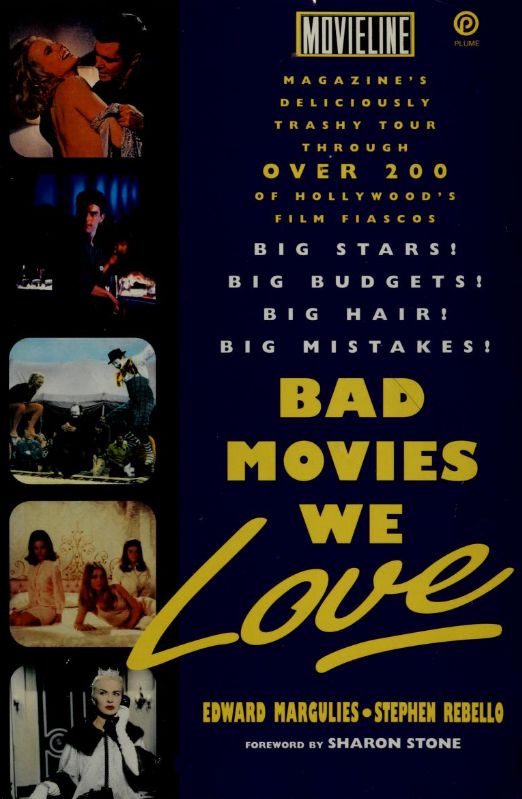
Worse still, writing about bad movies should be fun, reflecting the enjoyment they offer. This book fails even on that score. What might have been entertaining as one-off articles — the book started off as a magazine column — rapidly becomes grindingly repetitive. With no variation in style, the authors have all the imagination of a literary pit-bull. There is not one single movie in the book where reading the review makes you want to see it.
There’s little challenging about their targets: the movies in their “Hall of Shame” had an average age of over 30. Taking the piss out of old films is like stomping on puppies, no measure of skill is needed at all. And once you’ve read their opinion on ‘9 1/2 Weeks’, why bother with their views on ‘Zandalee’ (we get the point), ‘Two Moon Junction’ (We Get The Point), or even both ‘Wild Orchid’ and ‘Wild Orchid 2’ (WE GET THE POINT!). Dreadful, truly dreadful. About the only thing in its favour, is that it makes you want go and do better yourself. In which case, expect the ‘TC Book of Badfilm’ before this year is out.
Michael Sauter – The Worst Movies of All Time, Citadel Press, £11.99, pp342. After the above debacle, this book came as a breath of fresh air, mainly since it’s written in a far better spirit. The central thread is a look at fifty films, from 1932’s ‘Sign of the Cross’ to ‘Christopher Columbus: The Discovery’ from 1992; there’s also a random grab-bag of almost bad-enoughs, and a broad selection of B-movies, including the usual classics from Ed Wood and others of his ilk.
The book is not perfect. To start with, it’s far too American-oriented, with all 50 of the “worst” coming out of Hollywood. No book about bad film can be thought of as complete unless it includes something by Jess Franco. The author also has a tendency to twist facts to fit his views: misattributing dialogue from ‘Faster, Pussycat’, and claiming that the spoof ‘Casino Royale’ “was the Bond spoof to end all Bond spoofs”, forgetting perhaps the best of them all, ‘Top Secret’. However, it covers a broad spectrum of eras, without any obvious axe to grind against specific genres, and, most importantly of all, you come away from the reviews actually wanting to see a lot of the films (though there are exceptions to this, it would take a better writer even than myself to make anyone want to see ‘Howard the Duck’).
Most of the targets are obvious ones such as ‘Ishtar’ and ‘Heaven’s Gate’, though many of the older titles were new to me; I’ll be scanning the daytime TV schedules for ‘The Fountainhead’! But if you want coverage of turkeys from major Hollywood studios, this book is hard to beat.
David Kerekes and David Slater – Killing for Culture, Creation Books, £12.05, pp286. Now issued in a revised second edition, bringing it up to date with recent developments — though embarrassingly, since the first edition never made it off my “books I ought to buy” list, I can’t give any specifics about new material. What I can say is that it remains a comprehensive review of that mythical creature, the “snuff” movie, in all its forms from mondo to mainstream.
The book is at it’s best with a clinical deconstruction of all such alleged snuff films, calmly and logically pointing out the factors which prove they are faked or staged. The authors do so with a clear critical eye, unhesitatingly scathing when they feel it’s deserved. Copious footnotes and references back it up and give some much-needed authority, in a field dominated by the hype and the gory. On the down side, the book sometimes slides into a catalogue of atrocities, listing the nastiness in films whil avoiding much comment on why these films are made, or remain so popular. This is especially true with some of the pictures: blurry, b/w screen shots of state treasured Bud Dwyer committing suicide are a pointless exercise in geek-show mentality, and almost turn the book into mondo of its own. Otherwise, it’s immeasurably useful, essential reading for anyone who wants an informed viewpoint on the topic. Sadly, those most in need of reading it — certain MP’s, media pundits, and indeed Hollywood stars like Charlie Sheen — are unlikely to do so.

Geoff Davis – Nnn goes mobile, Juma, £3.95, 114pp. Sent to me by TC’s ex-printers, with a “this seems like your sort of thing” message, Davis writes parodic cyberpunk characterised by a charming, deliberately incoherent depiction of what the world might become i.e. a total mess. The hero, Nnn, has risen from the gutter to become a technical innovator specialising in nanotechnology. He’s just invented a living zipper, but is then kidnapped by guerillas keen to use his talents. His employers send out two hitmen, Fluffy and Kitch, to get him back before he does something they might regret. In this future world, Prague has been successfully duplicated, and the Old Kent Road has relocated to cyberspace.
And it’s in there that Davis’s strength lies; none of Gibson’s sleek data blocks exist in Nnn’s world, VR looks more like a drug trip animated by crazed Nintendo employees and directed by Ed Wood, Jr in one of his more enthusiatically ambitious moments. There are a lot of madcap characters here, and warped imaginings of self-propelled computers with personality disorders, public domain cultural icons based on Mickey Mouse, and eyepopping virtual sex. This is hideously plausible, as futures go — can’t wait, personally. Flashy, fast and effective. [Juma, 44 Wellington Street, Sheffield, S1 4HD]


